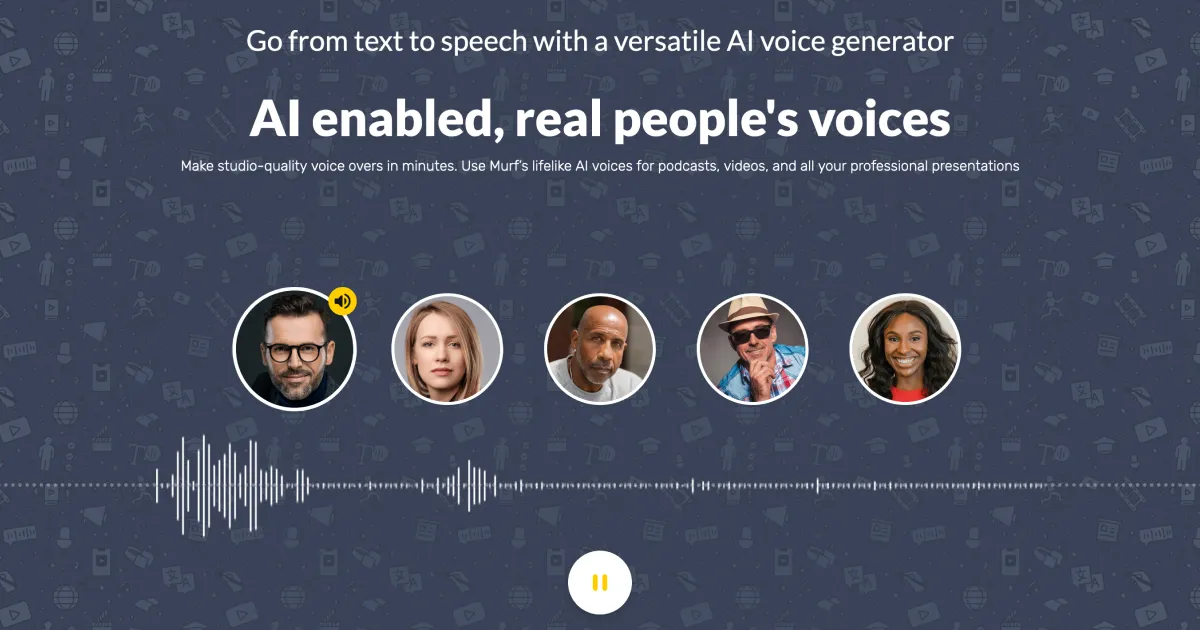The human voice is a fundamental tool for communication. However, millions of people around the world face challenges accessing information and interacting with the world due to vision impairments, speech disabilities, or learning differences. Fortunately, AI voices are emerging as a powerful force for inclusivity, offering innovative solutions to bridge the communication gap and empower individuals with disabilities.
Accessibility Challenges and the Promise of AI
Many individuals face accessibility barriers related to voice:
- Visual Impairment: People who are blind or visually impaired rely on assistive technologies like screen readers to access information. AI voices can power these technologies, reading text aloud in a clear and natural-sounding way.
- Speech Disabilities: Individuals with speech difficulties may struggle to communicate effectively. AI voices can offer alternative communication methods, allowing them to express themselves clearly and confidently.
- Learning Differences: People with learning disabilities like dyslexia might find reading challenging. AI voices can convert written text into audio, making learning materials more accessible and fostering comprehension.
AI Voices as Accessibility Tools
AI voices are revolutionizing accessibility in several ways:
- Expressive Text-to-Speech (TTS): AI-powered TTS tools go beyond basic narration. They can convey emotions and inflections, making the listening experience more engaging and easier to follow for individuals with visual impairments.
- Personalized Voice Assistants: AI voices can power virtual assistants that respond to voice commands, allowing users with speech disabilities to control their devices and interact with the digital world more independently.
- Multilingual Support: AI voices can bridge the language gap by offering text-to-speech in various languages. This opens up a wider range of information and resources for users with visual impairments or learning difficulties who may not speak the dominant language of their region.
- Customizable Speech Settings: The ability to adjust playback speed and voice characteristics makes AI voices adaptable to individual needs. Users can choose voices with different accents or speaking styles for a more comfortable listening experience.
Beyond Technology: Fostering Inclusion
While AI voices offer a powerful technological solution, true accessibility requires a broader approach:
- Inclusive Design: Websites, applications, and educational materials should be designed with accessibility in mind from the very beginning. This ensures seamless integration of AI voice technology and other assistive features.
- User Education: Raising awareness about the availability of AI voice-powered assistive technologies is crucial. Equipping people with disabilities with the knowledge and skills to utilize these tools empowers them to participate fully in the digital world.
- Collaborative Efforts: Collaboration between technology developers, accessibility specialists, and user communities is vital for the ongoing development and refinement of AI voice technology to serve the needs of diverse users with disabilities.
A Brighter Future for All
AI voices have the potential to transform the accessibility landscape, empowering individuals with disabilities to:
- Access information independently
- Communicate their needs effectively
- Learn and engage with the world around them more fully
By embracing AI voices alongside broader accessibility initiatives, we can create a future where everyone has the opportunity to participate actively and contribute their unique talents.
As AI voice technology continues to evolve, ongoing research and development are crucial. Here are some key areas of focus:
- Emotional Intelligence: Developing AI voices that can understand and convey a broader range of emotions will further enhance communication and user experience for individuals with disabilities.
- Context Awareness: AI voices that adapt their speech style and tone based on context can provide more nuanced communication and improve comprehension for users.
- Integration with Assistive Technologies: Seamless integration of AI voices with existing assistive technologies like screen readers and voice control systems will create a more unified and user-friendly experience for individuals with disabilities.
AI voices are not a silver bullet, but a powerful tool with the potential to bridge communication gaps and empower individuals with disabilities. By investing in this technology alongside fostering inclusive design principles and user education, we can work towards a world where everyone has a voice and can access the information and resources they need to thrive. Let’s harness the power of AI voices to create a truly inclusive future for all.


